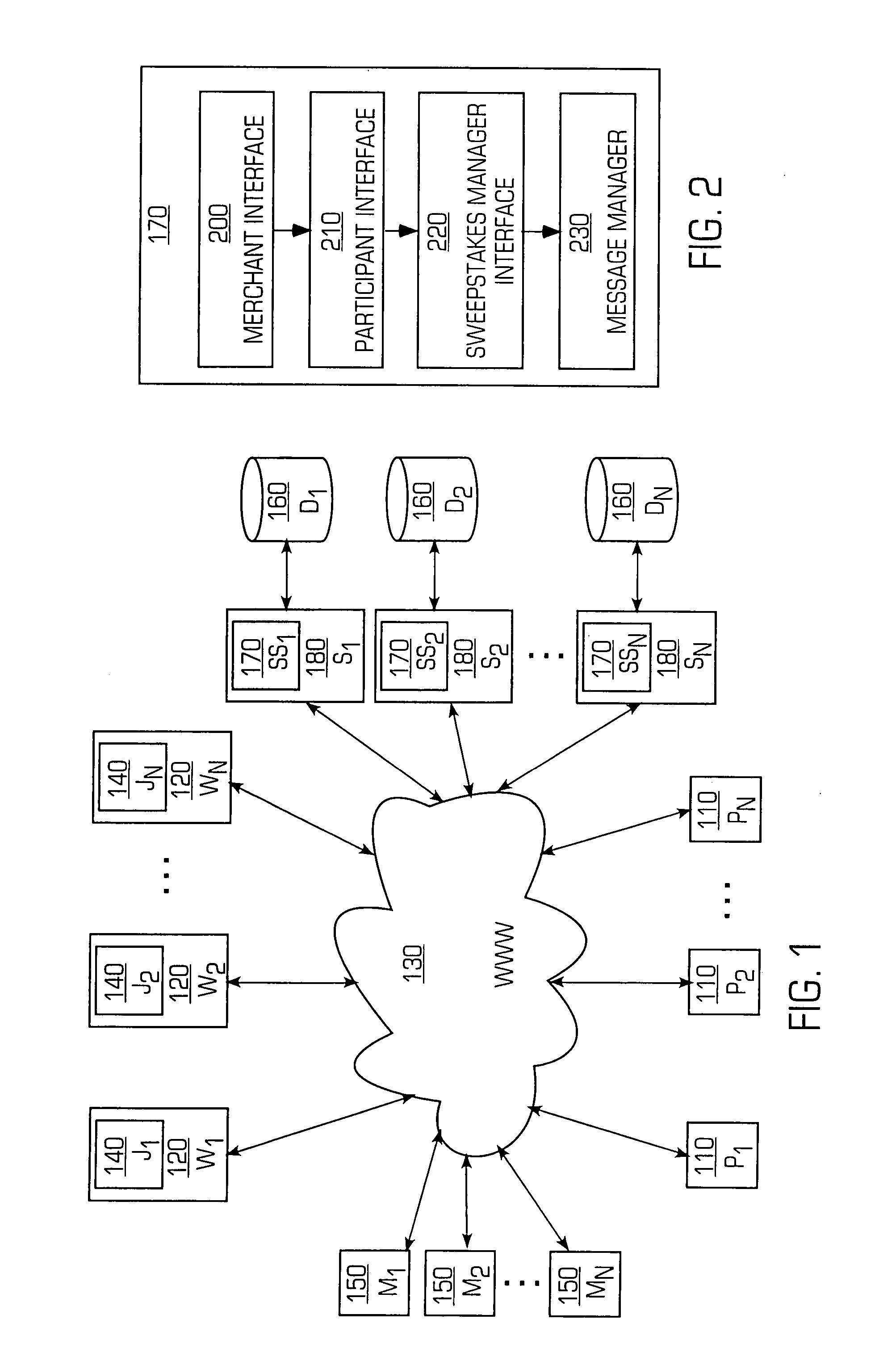Automated system and method for advertising, utilizing an online sweepstakes
a technology of automatic system and advertising method, applied in the field of advertising, can solve the problems of limited effectiveness of advertising and marketing tools, inability to draw the maximum possible number, and failure to achieve the increase in sales volume business, so as to stimulate interest, increase the incentive, and generate enhanced user traffi
- Summary
- Abstract
- Description
- Claims
- Application Information
AI Technical Summary
Benefits of technology
Problems solved by technology
Method used
Image
Examples
Embodiment Construction
[0042] A preferred embodiment of the invention will now be described in detail with reference to the accompanying drawings. FIG. 1 illustrates a block diagrammatic architectural view of an embodiment of the invention 100. As shown in FIG. 1, one or more users or participants (P1-PN) 110 may access one or more website servers (W1-WN) 120 via a computer network such as the Internet 130. Such users 110 may access the Internet 130 using, for example, a personal computer loaded with any form of Internet browser software, or may use other communications devices that are capable of establishing a connection to the World Wide Web, such as cellular phones, Personal Digital Assistants, or other wired or wireless devices. To access the one or more website servers 120, such users 110 direct their browser (or communications) software to access a particular website of their choosing, such as by entering the appropriate URL address into the browser's navigational toolbar or by clicking a link on a...
PUM
 Login to View More
Login to View More Abstract
Description
Claims
Application Information
 Login to View More
Login to View More - R&D
- Intellectual Property
- Life Sciences
- Materials
- Tech Scout
- Unparalleled Data Quality
- Higher Quality Content
- 60% Fewer Hallucinations
Browse by: Latest US Patents, China's latest patents, Technical Efficacy Thesaurus, Application Domain, Technology Topic, Popular Technical Reports.
© 2025 PatSnap. All rights reserved.Legal|Privacy policy|Modern Slavery Act Transparency Statement|Sitemap|About US| Contact US: help@patsnap.com



